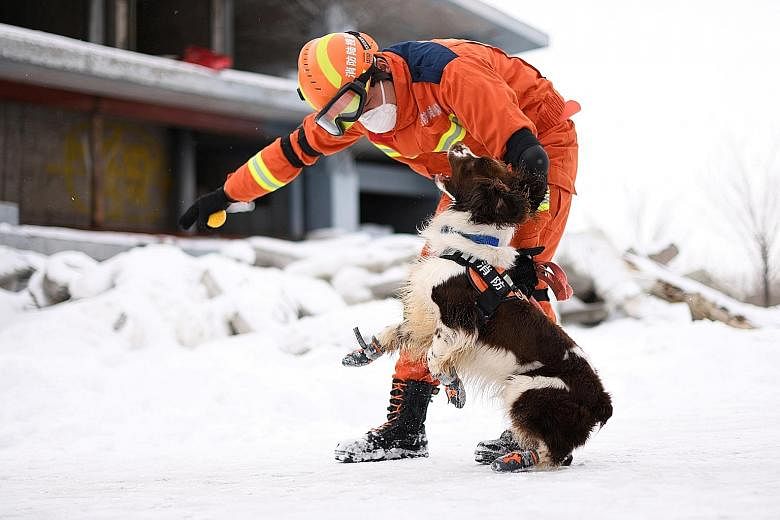China has centralised 13 government departments dealing with disaster-related work under one umbrella ministry to improve their coordination, and said it will beef up its disaster prevention and early warning systems this year, it announced on Tuesday.
The completion of the task by the new Ministry of Emergency Management comes a year after it was formed.
The ministry's Vice-Minister Sun Huashan said the move includes absorbing more than 200,000 firefighters that were once part of China's military and public security fire departments, and the setting up of 31 province-level emergency management bureaus. He added that more than 1.7 million earthquake-resistant homes were built by the authorities last year, benefiting about 5.4 million people.
At the same time, another eight million people were relocated away from disaster-prone areas.
The ministry was created by Beijing during the country's annual parliamentary session last March, as part of the largest government restructuring since China opened up in 1978. The restructure was to remove overlaps in responsibilities among ministries and agencies.
It coincides with the 10th anniversary of the devastating Wenchuan earthquake in south-western China that killed 70,000 people and showed up glaring inadequacies in the country's disaster response infrastructure.
Besides integrating the China Earthquake Administration, the ministry also took over geological disaster prevention from the Ministry of Land Resources, disaster relief from the Ministry of Civil Affairs and drought and flood control from the Ministry of Water Resources, among others.
Mr Zheng Guoguang, who is also vice-minister of emergency management, said the past year has shown the effectiveness of a central agency, instead of disparate agencies in charge of specific areas.
For instance, with both Tropical Storm Rumbia and Typhoon Mangkhut last year, the ministry sent working groups to south and east China respectively before they made landfall. The specialists worked with local rescue teams to minimise deaths by hastening rescue and resettlement work, he said.
As a result, the death toll and direct economic loss from Mangkhut were, respectively, only 17.5 per cent and 22 per cent of the average of those caused by the last three similar super typhoons, the ministry said.
"Compared with the past, we are quicker in both rescue work and disaster relief," Mr Zheng said. "This includes allocation of relief supplies and financial aid from the central government... and protecting lives and property."
The number of dead and missing from natural disasters last year fell 60 per cent from the average five years ago, the ministry added.
The priority China has given to disaster prevention and relief stands in stark contrast to the attacks levelled against United States President Donald Trump last week by both the governor of Puerto Rico and Democratic lawmakers for trying to divert funds earmarked for disaster relief.
The White House had directed the US Army Corps of Engineers to determine how much of the US$13.9 billion (S$18.9 billion) in emergency funds for Puerto Rico could be redirected to build a border wall with Mexico.
Experts, such as Mr Eric Holdeman, director of the Seattle-based think-tank Centre for Regional Disaster Resilience, said the reforms show China has "a longer view of disasters than we do in the United States".

